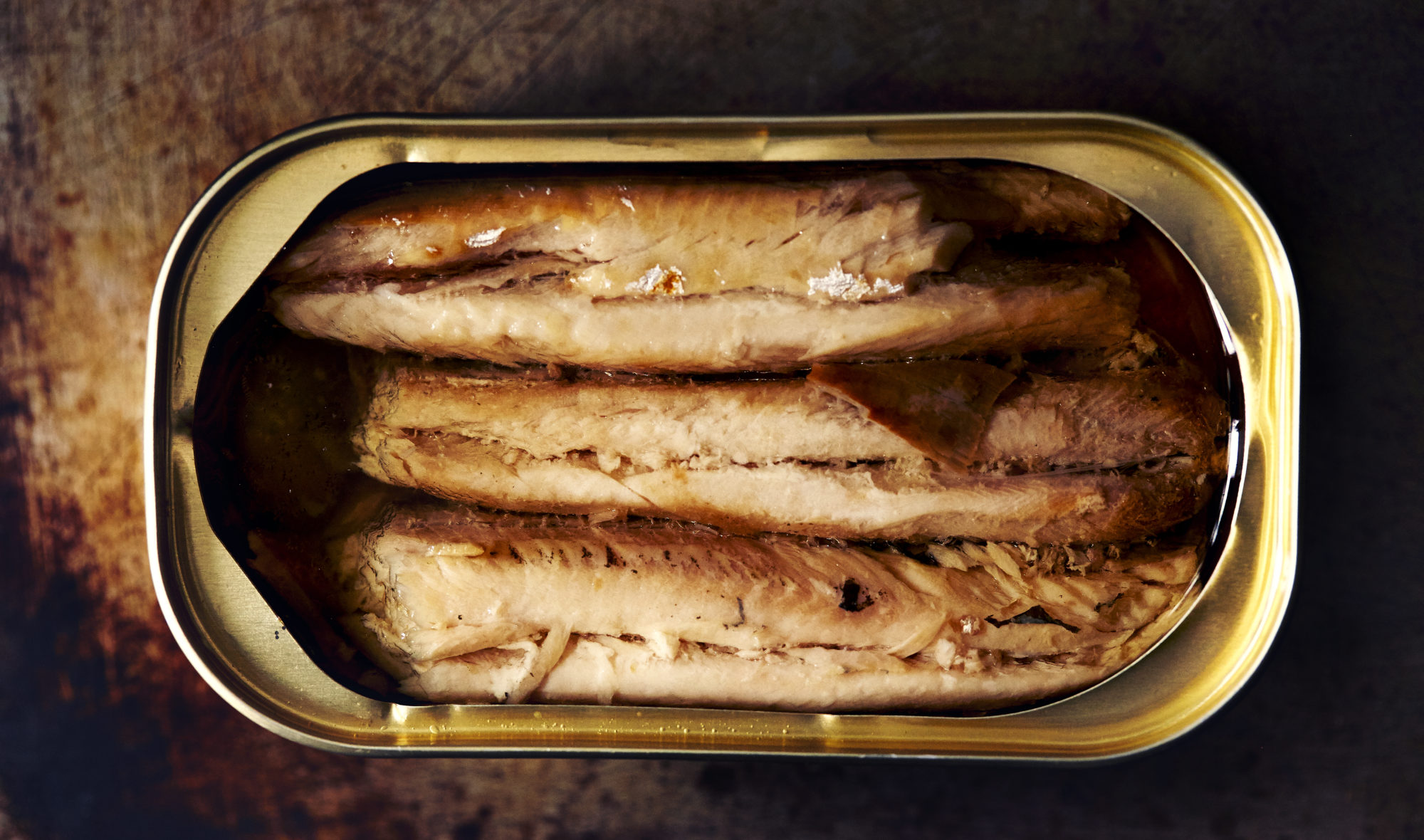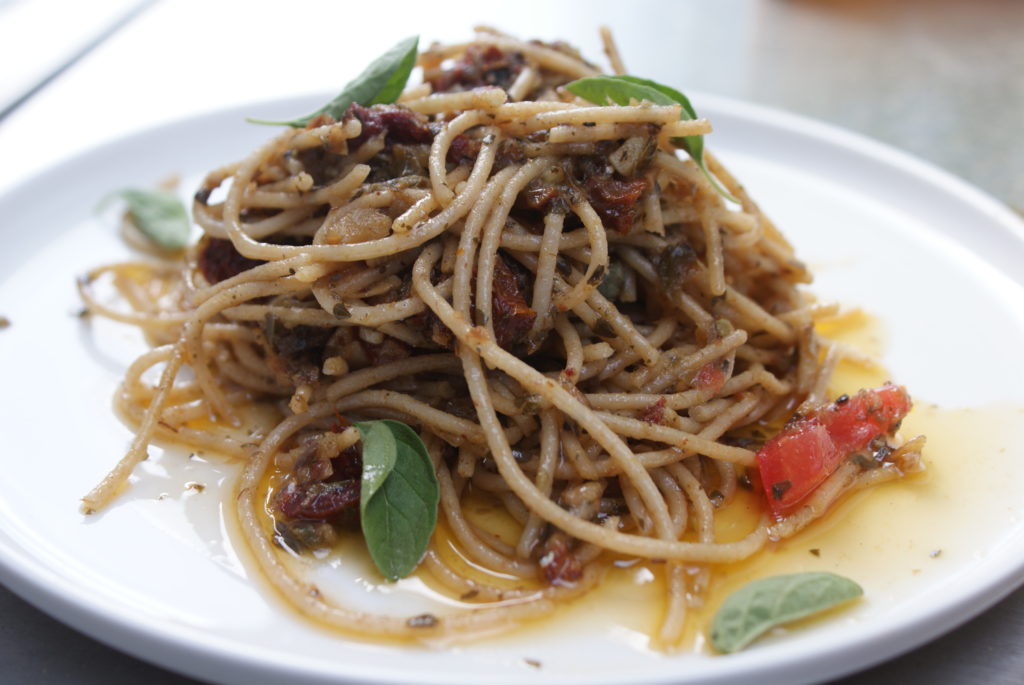
Join PN Level 2 for about $6/day! Plus, FREE Bonus worth $697! (This week only.)

The name “sardine” refers to more than twenty types of small, oily, saltwater fish in the herring family. They may be eaten fresh or preserved. Sardines are incredibly nutritious. For just one tin of Atlantic sardines (3.75 ounces, at about 191 calories), you get about 23g of protein, 10.53g of healthy fats (rich in omega-3 fatty acids), as well as vitamin D and tons of vitamin B12, not to mention a long list of other vitamins and minerals. Plus, sardines are relatively low in contaminants such as mercury. For canned sardines, look for those packed in water or olive oil. If using fresh, buy from a trusted fishmonger and cook as soon as possible to prevent spoilage.
The name “sardine” refers to more than twenty types of small, oily, saltwater fish in the herring family. They may be eaten fresh or preserved.
The term sardine was first used in English around the 15th century, probably in reference to the island of Sardinia, where large schools of these fish were once found. Spain, France, Norway, and Portugal are now the leading suppliers of tinned sardines, but the fish are common throughout the Atlantic, Pacific, and Mediterranean.
For many years a neglected food, sardines are enjoying new popularity. Sustainably fished, low in contaminants, and high in nutrients and taste, they’re an excellent choice.
Sardines are less than six inches long. (Larger than that, and they are called pilchards.) They are silvery in color, soft-boned, and oily-fleshed.
The nutrient value of sardines varies according to the type and the preparation. One tin of Atlantic sardines (3.8 oz or 92g) contains 191 calories, 22.7g of protein, 10.5g of fat, and no carbohydrates, fiber, or sugars.
Sardines are one of the best available sources of vitamin B12, which is important for supporting cardiovascular health. They are also rich in selenium, phosphorus, omega-3 fatty acids, protein, and vitamin D. In addition, they contain significant amounts of calcium, vitamin B3, vitamin B2, copper, and choline.
Because they are low in the food chain and eat mainly plankton, sardines are relatively low in contaminants such as mercury.
You can buy sardines fresh or in cans. If buying fresh, select as you would any fish. Look for shiny skin, bright eyes, a flat (not bloated) belly, and do the sniff test. If it smells “off,” it probably is.
When buying tinned sardines, check the “best before” date to ensure they are still good. Choose sardines packed in olive oil or water rather than those packed in soybean oil.
Note that canned sardines may be prepared in a variety of ways. Some may be smoked, while others may be flavored. Ensure you are getting the type you prefer.
Fresh sardines spoil quickly and normal refrigerator temperatures are not really cold enough to prevent this. It’s best to keep sardines between 36-40°F (2-4°C).
After buying, remove them from the store packaging, rinse them, place them in a plastic bag, and cover with ice cubes or an ice pack in the fridge, replenishing the ice as required. Eat them as soon as possible, within two days at most.
Store canned sardines in one of your cooler kitchen cupboards (i.e. not the one right on top of the stove). Turn the tin every now and again to ensure the fish are all exposed to the oil or water they are packed in. Eat by the expiration date, and store any partially eaten cans in your fridge.
Canned sardines require little preparation. Simply rinse off the excess oil and serve as you like, cold or warmed.
Fresh sardines or pilchards need to be scaled, gutted, and boned. Your fishmonger may do this for you. It’s not a difficult job, but may take a bit of extra time if you are doing it yourself.
Sardines can then be grilled, fried, broiled, or baked. Because the fish are small, cooking time is short—usually around 10 minutes.
For simple grilled sardines, begin by heating your grill. Next, brush the fish with olive oil to keep it moist. Cook for about 5 minutes, and turn gently with kitchen tongs. Cook on the other side. Serve.
Sardines are great simply squirted with a bit of lemon juice, salt, and pepper. They’re also tasty with a sauce of balsamic or red wine vinegar and a bit of olive oil.
Olives, capers, fennel, roasted garlic and peppers, parsley, tomatoes, oregano, and rosemary are traditional and tasty accompaniments.

This pasta makes a delicious dinner. The pasta packs a rich flavor profile, which is guaranteed to please your tastebuds.
Prep Time: 15 minutes Cook Time: 15 minutes Yield: 4 servings
Begin by cooking the pasta according to the instructions on the box. Once cooked, drain and cool with a little running water. Drain again really well.
Next, preheat a large pot on medium heat. Add the first 1/4 cup of olive oil, the onion, and garlic. Sauté, stirring regularly until lightly browned.
Add the sardines, capers, sun-dried tomatoes, second 1/4 cup of olive oil, and parsley. Stir well.
Finally, add the pasta. Stir very well and serve immediately.
Store leftovers in fridge.
Enjoy!
Precision Nutrition’s Encyclopedia of Food expands every single month as we highlight new foods and showcase beautiful food photography. If you’d like to stay up to date, simply click this link. From there, we’ll send you a FREE copy of our recipe book. We’ll also let you know when new and delicious foods are added to the site.
The name “sardine” refers to more than twenty types of small, oily, saltwater fish in the herring family. They may be eaten fresh or preserved. Sardines are incredibly nutritious. For just one tin of Atlantic sardines (3.75 ounces, at about 191 calories), you get about 23g of protein, 10.53g of healthy fats (rich in omega-3 fatty acids), as well as vitamin D and tons of vitamin B12, not to mention a long list of other vitamins and minerals. Plus, sardines are relatively low in contaminants such as mercury. For canned sardines, look for those packed in water or olive oil. If using fresh, buy from a trusted fishmonger and cook as soon as possible to prevent spoilage.